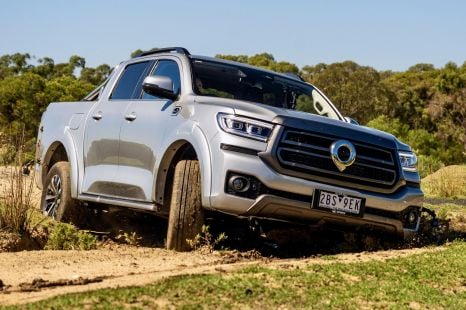

Max Davies
2026 GWM Cannon Ultra review
6 Days Ago
European correspondent Neil Briscoe tests the facelifted BMW X3 ahead of its Australian arrival in the coming weeks.

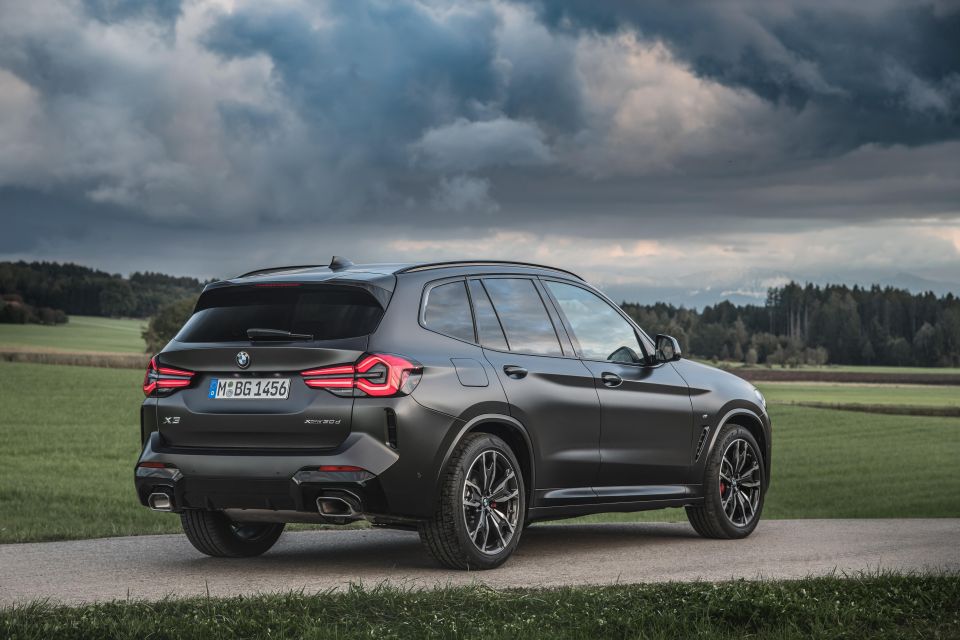

Contributor
New from
$70,900
excl. on-roads

Contributor
New from
$70,900
excl. on-roads


Contributor
New from
$70,900
excl. on-roads

Contributor
New from
$70,900
excl. on-roads
Quickly see how this car stacks up against its competition. Select any benchmark to see more details.
Where expert car reviews meet expert car buying – CarExpert gives you trusted advice, personalised service and real savings on your next new car.
If you’re looking at the photos of this new BMW X3, squinting a bit, and shouting “that’s just the old one!” loudly at your screen, well… you’re not alone.
BMW has given its mid-size premium SUV a round of updates and changes for 2022 that wouldn’t fill the back of a page if you wrote them all down. That’s in keeping with rivals such as the Audi Q5 and Mercedes-Benz GLC, both of which have recently been given similar low-key upgrades.
On the outside of the X3, you’ll find a new grille. It’s larger, deeper and joined-up in the middle, but still not the full-on ‘beaver teeth’ of the 4 Series or the iX. There are slimmer headlights, new bumpers, new brake lights, a new tailgate (which is electrically powered across the range) and a couple of new colour options, including the matte ‘Frozen Grey’ of our test car.
It’s not a profound change, and the X3 is still more imposing than it is pretty, but there’s an undeniable visual appeal.

In spite of the brief changes and updates, this X3 costs more than the outgoing model.
It’s gone up by $3000 in base form, and by $4000 if you’re talking about the xDrive30d 3.0-litre diesel model that we’re assessing here.
The entry-level X3 sDrive20i starts at $73,900 before on-road costs, while our high-grade xDrive30d test car kicks off at $94,900 before on-roads.
It’s pretty line-ball with the competition. The Audi Q5 40 TDI starts at $69,900 and the Mercedes-Benz GLC200 kicks off at $75,100, both before on-road costs.
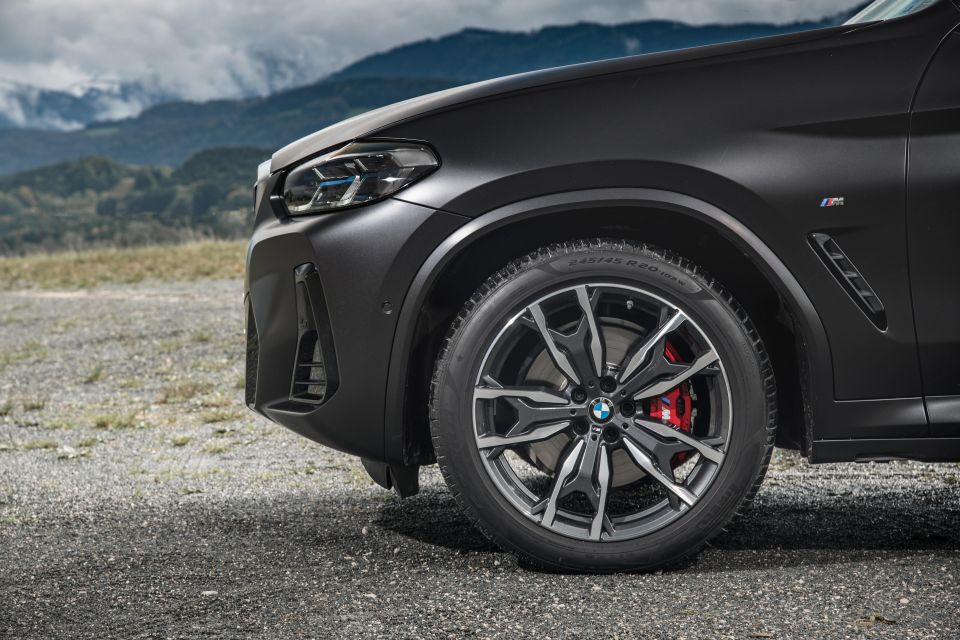
Buy your new car without the stress. It's fast, simple and completely free.
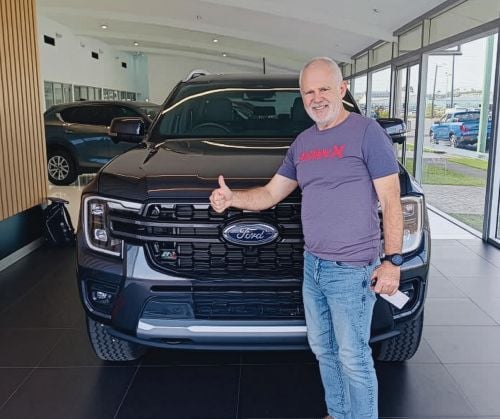
Great service from Travis and team, second time I have used this business would not hesitate to recommend them to anyone
Craig C.
Purchased a Ford Ranger in Sunshine Coast, QLD
CarExpert helped Craig save $7,224 on his Ford Ranger, now let us save you on your next new car.
Get your BEST priceBMW X3 sDrive20i and xDrive20d highlights:
#Enhanced telephony temporarily replaces Wireless Charging due to the current semiconductor supply shortage. A $429 reduction is applied to the RRP in light of the change.
New additions for 2022 include:
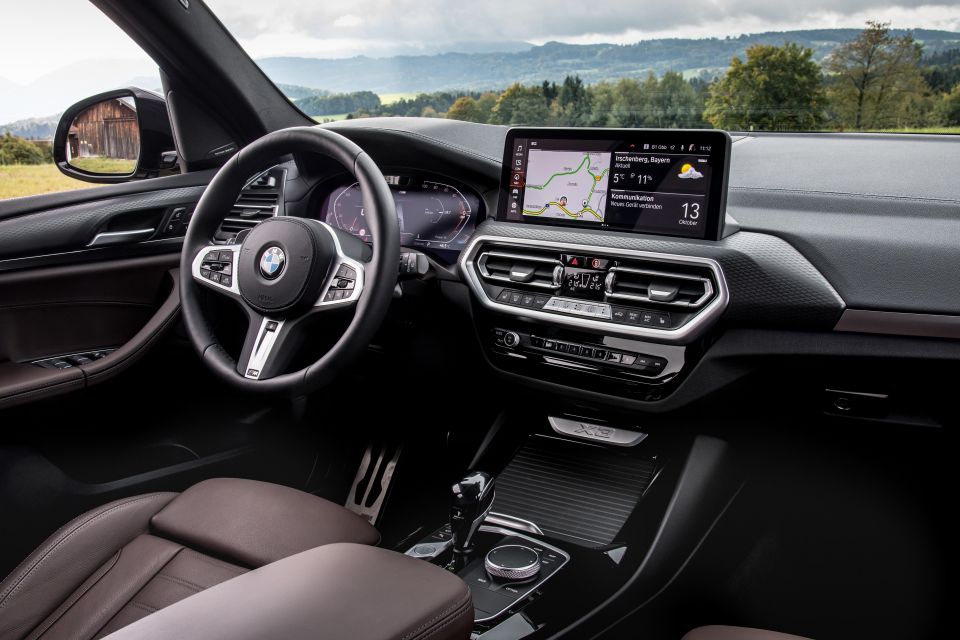
BMW X3 xDrive30i and xDrive30d add the following:
New additions for 2022 include:
^Driving Assistant temporarily replaces Driving Assistant Professional due to the current semiconductor supply shortage. A $2500 reduction is applied to the listed RRP in light of the change.

BMW X3 xDrive30e adds the following:
BMW X3 M40i adds the following:
New additions for 2022 include:

The 2022 BMW X3 will be offered with a range of extra-cost options and packages. We’ve detailed the three main ones below.
Visibility Package: $5400 (20i, 20d, 30i, 30d)
Comfort Package: $1200 (20i, 20d, 30i, 30d)
Rear Seat Comfort Package: $2700 (20i, 20d, 30i, 30d), $2000 (30e, M40i)
For the full options list, contact your BMW dealer.
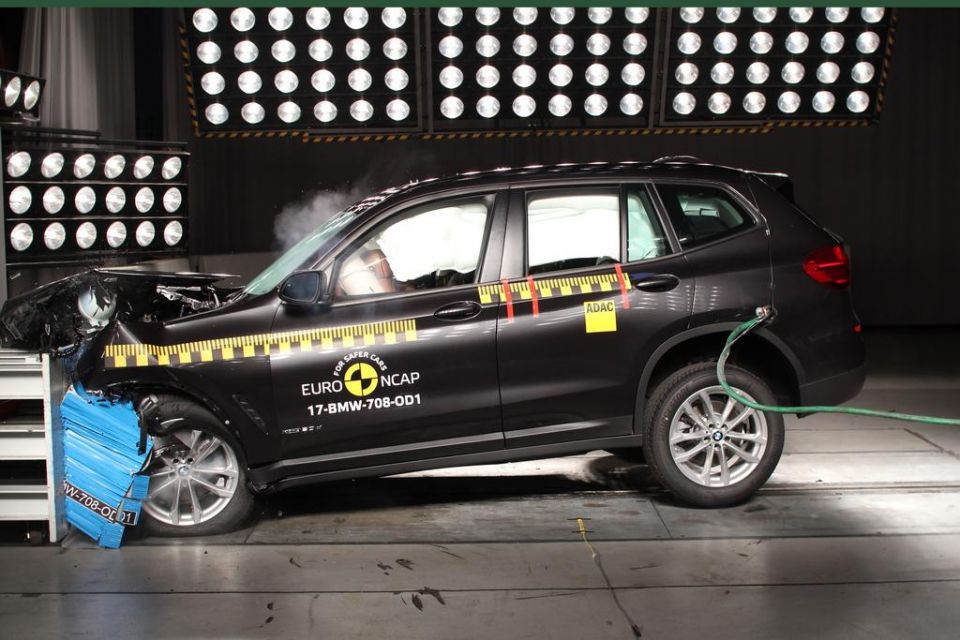
The pre-facelift BMW X3 managed a five-star ANCAP safety rating based on tests conducted by Euro NCAP in 2017.
It managed 93 per cent for adult occupant protection, 84 per cent for child occupant protection, 70 per cent for pedestrian detection and 58 per cent for safety assist. This rating only applies to xDrive20d and xDrive30i variants in the pre-update line-up, however.
Dual frontal, side chest, side curtain and a driver’s knee airbag are standard.
X3 sDrive20i and xDrive20d models come with the basic camera-based Driving Assistant package, which includes:
The X3 xDrive30i, xDrive30d, xDrive30e and M40i get the enhanced Driving Assistant Professional, which adds:
Driving Assistant Professional is currently unavailable on all versions but the M40i, however, “due to the current semiconductor supply shortage”. BMW Australia says this is only temporary, and a $2500 price reduction is applied to the listed RRP of impacted variants.
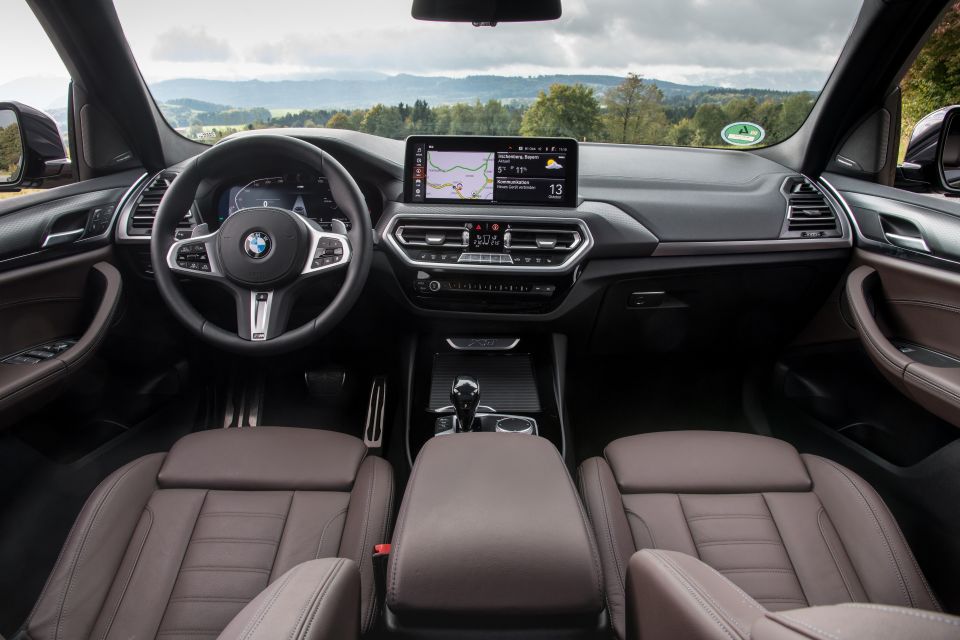
If the X3 isn’t the prettiest car on the outside, then it really makes up for that on the inside.
Long gone are the days when BMW’s cabin layout and quality lagged behind those of Audi and Mercedes — in fact, we’d say that this is a better cabin than that of the facelifted Audi Q5.
Basically, it’s the same as the cabin in the 3 Series, but higher up. New to the X3 is the centre console between the front seats, which now has a smaller, chunkier gear selector for the standard-fit eight-speed automatic gearbox, along with buttons for the engine stop-start, driving mode selection and the round click-wheel controller for the iDrive system.
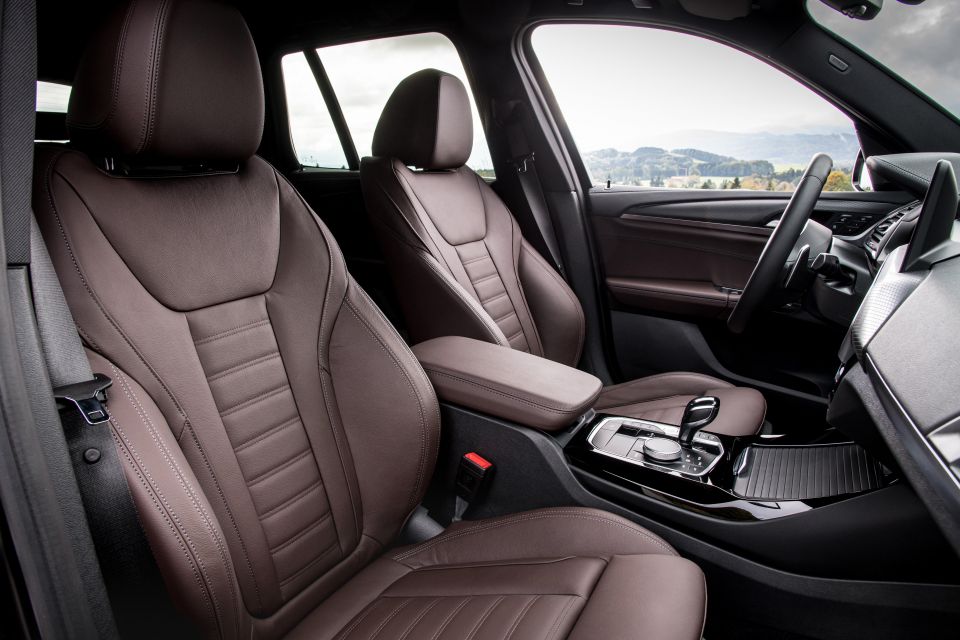
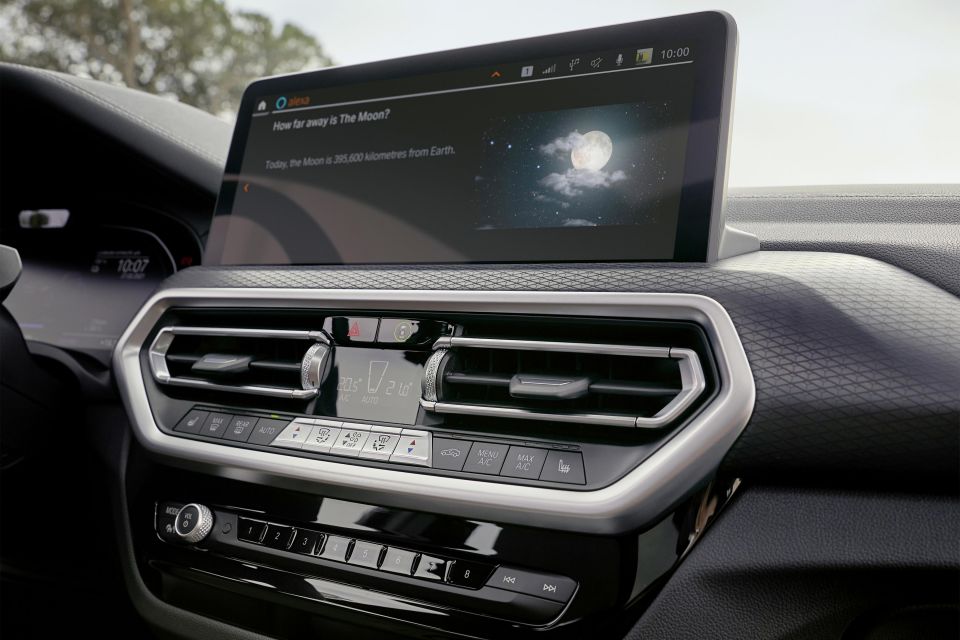
That infotainment lives on the new screen, mounted high up on the dashboard. As standard in Europe it’s a 10.25-inch display, but it can optionally be expanded to the 12.3-inch ‘Professional’ unit Australian models will get as standard.
It’s not BMW’s latest system, though — the X3 is running iDrive version 7.0, whereas the new all-electric iX and i4 models run the snazzy new iDrive 8.
Integrated into the software you’ll find apps such as Amazon Alexa and Spotify, as well as closer integration with the BMW phone app (which allows you to do things like send navigation instructions to the car from your phone, as well as using your phone as an electronic key).

There’s wireless Apple CarPlay, while full Android Auto integration is imminent. You can have gesture control, but it’s still just a gimmick, and if you like having shouting arguments with your dashboard, the ‘Hey, BMW’ digital voice assistant can now do more things, such as opening or closing the windows or changing the air conditioning or driving modes.
In front of the driver is BMW’s big digital instrument display, about which some people are ambivalent but which we like. The optional head-up display is excellent, able to show full mapping instructions for the navigation, as well as sports displays when you dial up the racier driving modes.
There’s no shortage of connections for electronics, with plenty of USB ports front and rear, while rear-seat passengers get sufficient space that you’d actually start to question the logic of spending more on the bigger X5.
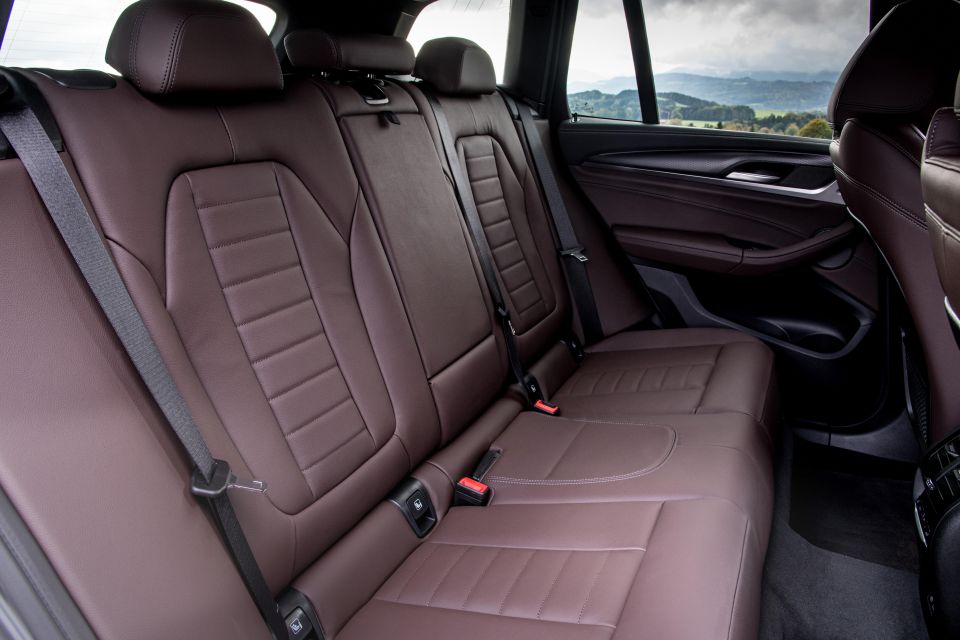

Other changes inside are basically just trim stuff, such as standard-fit sports seats and synthetic leather that’s been upgraded to look and feel more luxurious.
The boot measures 550L with all five seats in place, and expands to 1600L with them folded (EU specification), though the X3 xDrive30e offers a little less space due to the battery mounted under the boot floor – offering 450L/1500L.
By comparison, the Audi Q5 packs 520L/1520L, while the Mercedes-Benz GLC offers 550L with five seats in place.

Diesel power may not be the most fashionable thing right now in a global sense, and if you want to assuage your guilty climate conscience, the all-electric iX3 is just across the showroom floor. If, however, you want a car with staggeringly good all-round performance, step right this way…
It may not be cheap, but the 3.0-litre straight-six turbo-diesel is a marvel of modern performance. It can chuck the X3 to 100km/h in 5.7 seconds yet sip fuel on long runs with the daintiness of a child essaying their first tea party. BMW quotes fuel consumption of 7.0 litres per 100km, but we reckon you’ll easily do better than that if you’re being careful.
The xDrive30d — along with all the X3’s other combustion engines — now gets a 48-Volt mild-hybrid system that can run the stop-start for longer (and allow it to kick in earlier) to help save fuel, and which allows the X3 to sail along in neutral with the engine at idle when you back off the throttle at cruising speeds. These electrified powertrains won’t be available in Australia at launch, however.
It does also pitch in with an extra 8kW of power when you accelerate hard, but with 210kW and 650Nm already doing the pulling, you’d be hard pressed to notice that.
As ever, the eight-speed Steptronic automatic gearbox (now standard across the X3 range) is pretty much perfect. The best thing about it is that you never bother using the manual gearshift paddles — just leave it in D (or S, for Sport) and let it do its thing.

As tall, mildly top-heavy SUVs that weigh close to 2000kg go, the X3 is brilliant.
It remains the case that if you really enjoy your driving but still want something practical, a 5 Series Touring is a much better buy and runs the same mechanical package.
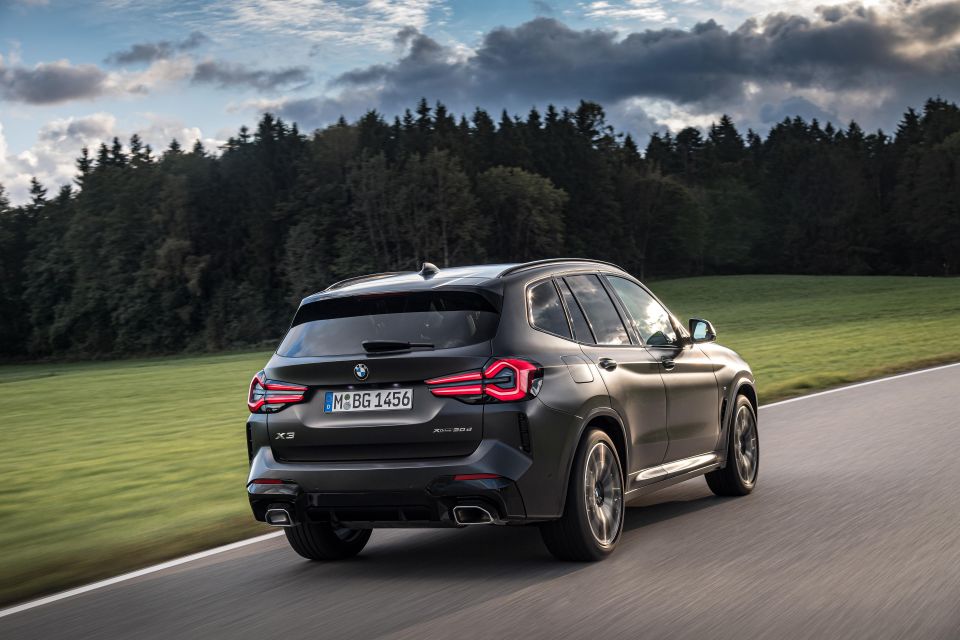
Where expert car reviews meet expert car buying – CarExpert gives you trusted advice, personalised service and real savings on your next new car.
The X3’s best aspect is its steering, which manages a good balance between high-speed stability and low-speed response.
There’s surprisingly good feel and feedback for a big SUV with electric power steering, and a meaty weight at the wheel rim that feels reassuring.
With standard xDrive four-wheel drive, you’re not going to run out of traction in anything but the most demanding conditions too.
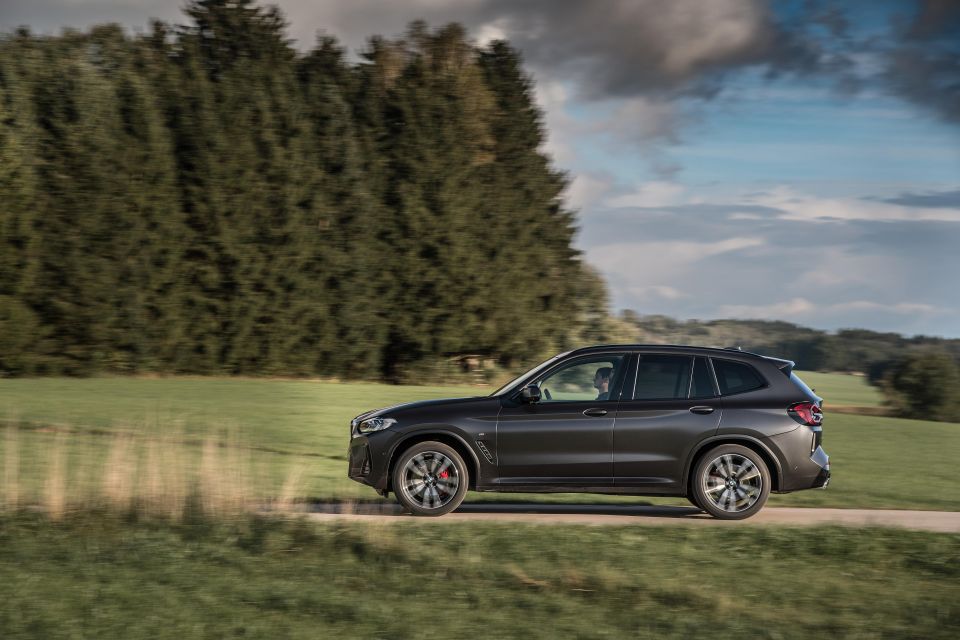
The ride quality is also incredibly good. It’s never soft (what BMW ever was?) but it’s equally never harsh, even when you dial up Sport mode (although obviously it does get a bit firmer then).
While the likes of the Q5, GLC and F-Pace have really caught up with the X3 in dynamic terms in the past couple of years, the BMW just has its nose still out in front.
It’s fun enough to wear the blue and white of Munich with pride, anyway.
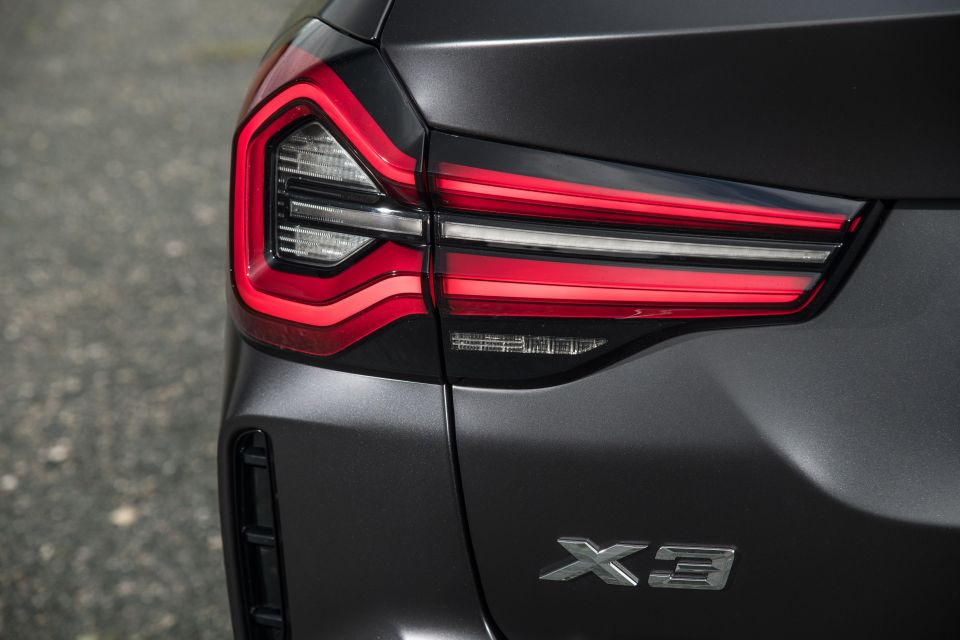
BMW Australia covers its line-up with a three-year, unlimited-kilometre warranty.
Servicing can be taken care of as you go or through a pre-paid Service Inclusive plan.
While pricing for the new range hasn’t been confirmed, pricing for the ‘Basic’ plan is listed at $1950 for the current 2021 BMW X3 range, covering five years or 80,000 kilometres – whichever comes first.

Buy your new car without the stress. It's fast, simple and completely free.

Great service from Travis and team, second time I have used this business would not hesitate to recommend them to anyone
Craig C.
Purchased a Ford Ranger in Sunshine Coast, QLD
CarExpert helped Craig save $7,224 on his Ford Ranger, now let us save you on your next new car.
Get your BEST priceWe’d still rather have a 5 Series Touring than an X3 – not that Australians have the option anymore.
However, the global car buying public have made it very clear that an SUV is what they want, and so the X3 is among the least-worst options in that regard.
The styling changes haven’t turned it into a true beauty, but it’s handsome enough, has a fantastic interior and is exceptionally good to drive.

Click the images for the full gallery
MORE: Everything BMW X3
Where expert car reviews meet expert car buying – CarExpert gives you trusted advice, personalised service and real savings on your next new car.


Max Davies
6 Days Ago
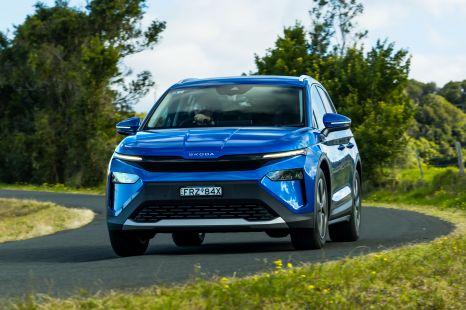

Josh Nevett
5 Days Ago
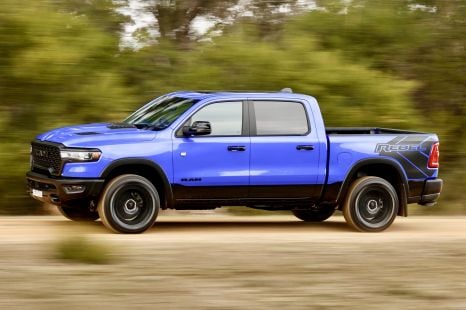

Max Davies
5 Days Ago
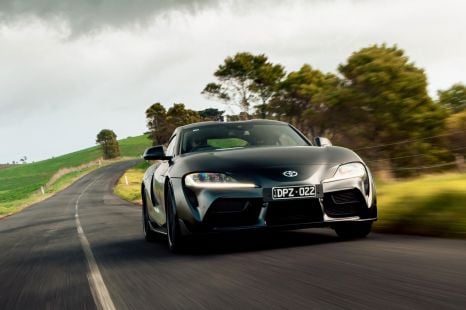

Max Davies
3 Days Ago
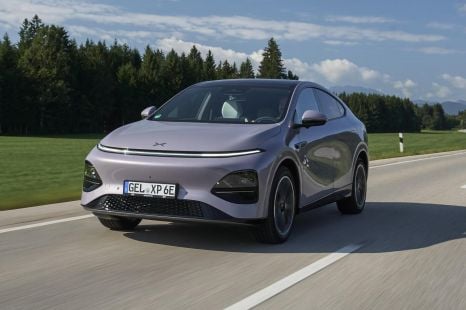

Neil Briscoe
2 Days Ago


Max Davies
1 Day Ago